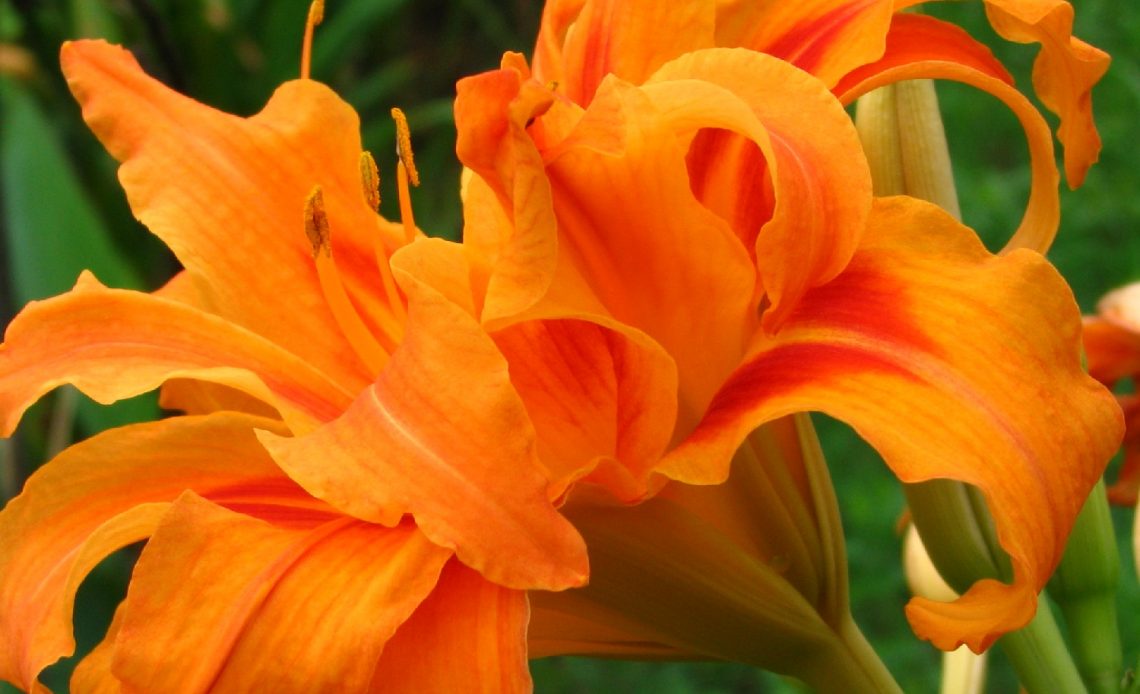

We’re here to help! Wild Yards is a completely free website that is 100% dedicated to helping you create a wildlife-friendly, sustainable yard. Read more
WildYards is reader-supported. When you buy a product through a link on our site, we may earn a comission. Every product is independently selected by our (obsessive) editors and our reviews are unbiased and objective. Read more about our mission or our privacy policy.
With over 2,000 varieties to choose from, lilies are some of the most popular blooms among backyard gardeners, and it’s not hard to see why. These trumpet-shaped flowers emerge from tall stalks, so they’re impossible to miss. And their wide range of colors means there’s a lily to suit every garden. If you want to plant lilies in your backyard, but you’re looking for something more eye-catching than traditional white varieties, there are several types of orange lilies you can grow to achieve a more dramatic effect.
‘Fire King’, ‘Orange Ton’, and ‘Easy Love’ lilies come in vibrant shades of orange and orange-red that add interest to any flower garden. Other varieties, like ‘Must See’ and ‘Leopard’ lilies are freckled with multicolored specks at their centers, while the ‘Sunny Morning’ lily’s bold yellow-orange petals are covered in flecks of maroon.
10 Best orange lilies for your backyard
Maybe you want to add a focal point to your garden by creating a monochromatic ornamental arrangement. Or maybe you want to turn your raised flower bed into a rainbow of blooms. Either way, these orange lilies will help you get the job done. Check out some of our favorite types of orange lilies below.
‘Fire King’ (zones 3 through 9)
Featuring stunning orange blooms suspended from 3 to 4-foot-tall stalks, the ‘Fire King’ lily truly lives up to its name. This lily is just beautiful when grown in large pots on a patio or porch, but its size makes it well-suited to act as a border around existing flower beds. The ‘Fire King’ is a shocking orange-red lily that produces multiple flowers on a single stalk. So when they bloom in late spring and early summer, they’re perfect for cutting and using in flower arrangements to dress up your interior decor.
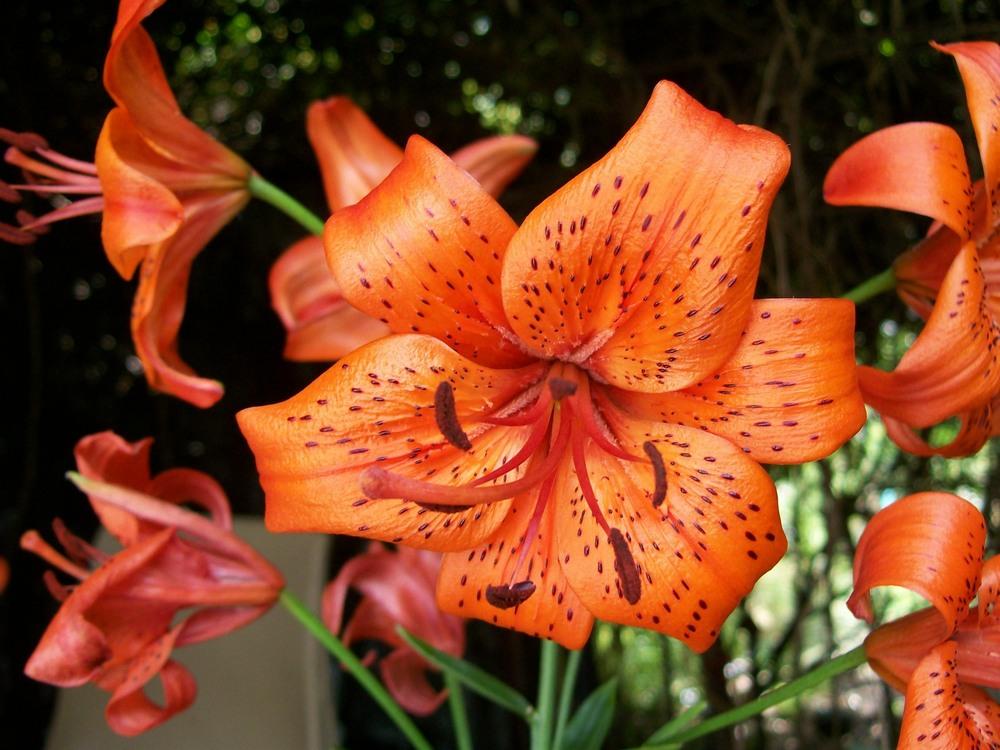
‘Easy Love’ (zones 3 through 8)
These cool-weather-loving lilies are perfect for allergy sufferers because they don’t produce any pollen. On the downside, this means they won’t help feed your local bee and butterfly population. However, when integrated with other pollinator favorites, this flower’s vibrant orange color can still attract beneficial insects to your backyard. At 6 ¾” inches in length, this lily’s blooms are large enough to make a statement, yet the plant itself is compact enough to grow in pots, planters, and small flower beds. Because ‘Easy Love’ blooms in the early to midsummer months, they’re the perfect way to usher in the warmer weather.

‘Orange Ton’ (zones 3 through 8)
One of our favorite types of orange lilies is the ‘Orange Ton’ variety. It’s got everything you could possibly want from an orange lily. It’s bright, it’s flashy, it’s fragrant. This sizeable bloom reaches 40 inches in height, so it looks great in pots but it can hold its own in your flower beds, too. ‘Orange Ton’ blooms in early to midsummer, producing eye-catching flowers with deep reddish orange tips, fading to tangerine orange centers. Their high visibility and tendency to spread season after season makes them a fantastic addition to any landscape.
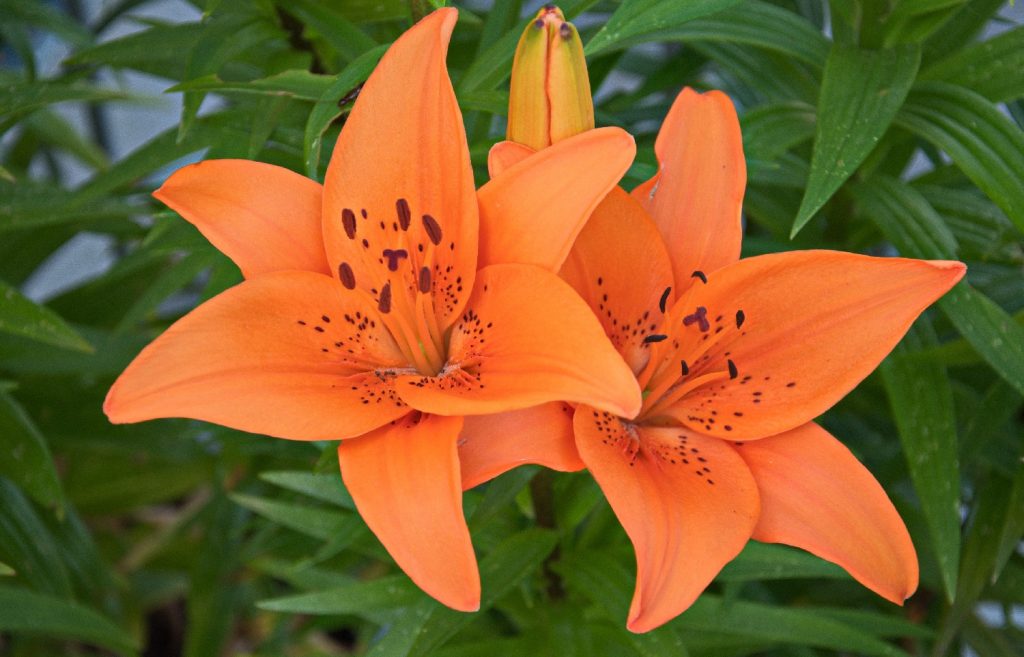
‘Leopard’ (zones 5 through 9)
If you’d prefer a lily with a little more color variation than the ‘Orange Ton’, try ‘Leopard’ lilies instead. These woodland lilies are native to North America, specifically, the Pacific Coast, and are better suited to gardens that have a lot of shade. These flowers are a gentle orange, reminiscent of orange sorbet, at the tips. But they take on a golden hue towards their centers, with haphazard specks of ruby red covering the whole bloom. Wonderfully fragrant ‘Leopard’ lilies flower in midsummer and can reach impressive heights of 5 to 6 feet.
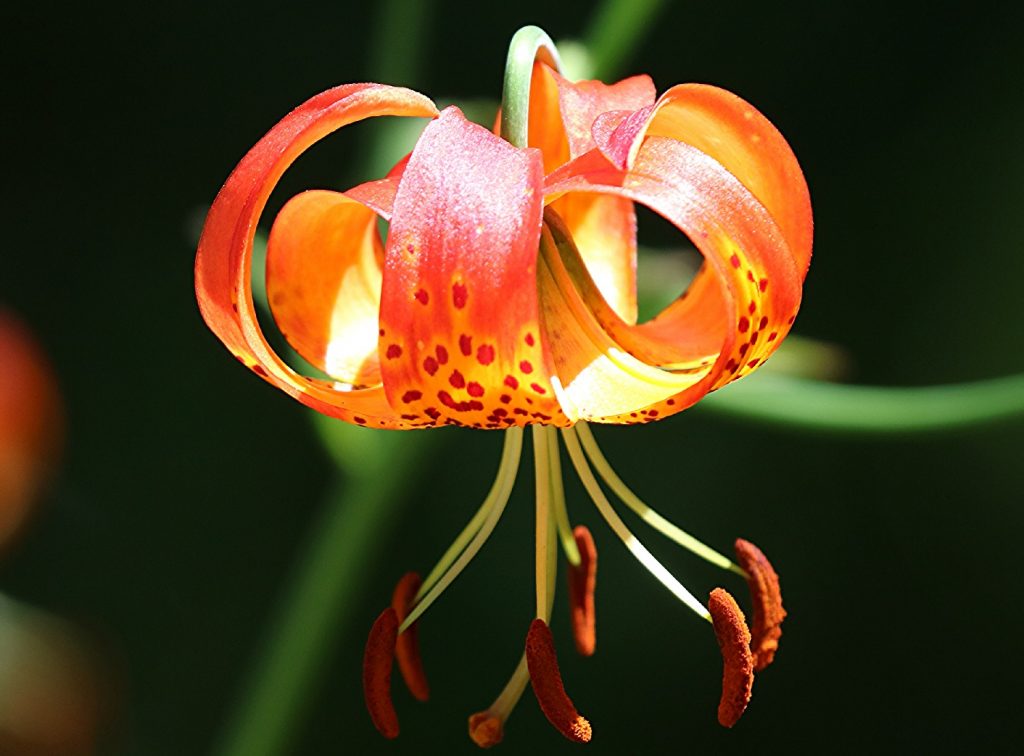
‘Must See’ (zones 3 through 8)
The aptly named ‘Must See’ lily is truly a sight to behold. This lily produces multicolored blooms in shades of white, buttery yellow, pale green, and vivid orange. The petals are dotted with deep reddish brown specks, adding contrast to their delicate coloring. ‘Must See’ blooms in the early to midsummer months when its 4-inch double-form flowers emerge. These pollen-less flowers are great for cutting and bringing indoors.
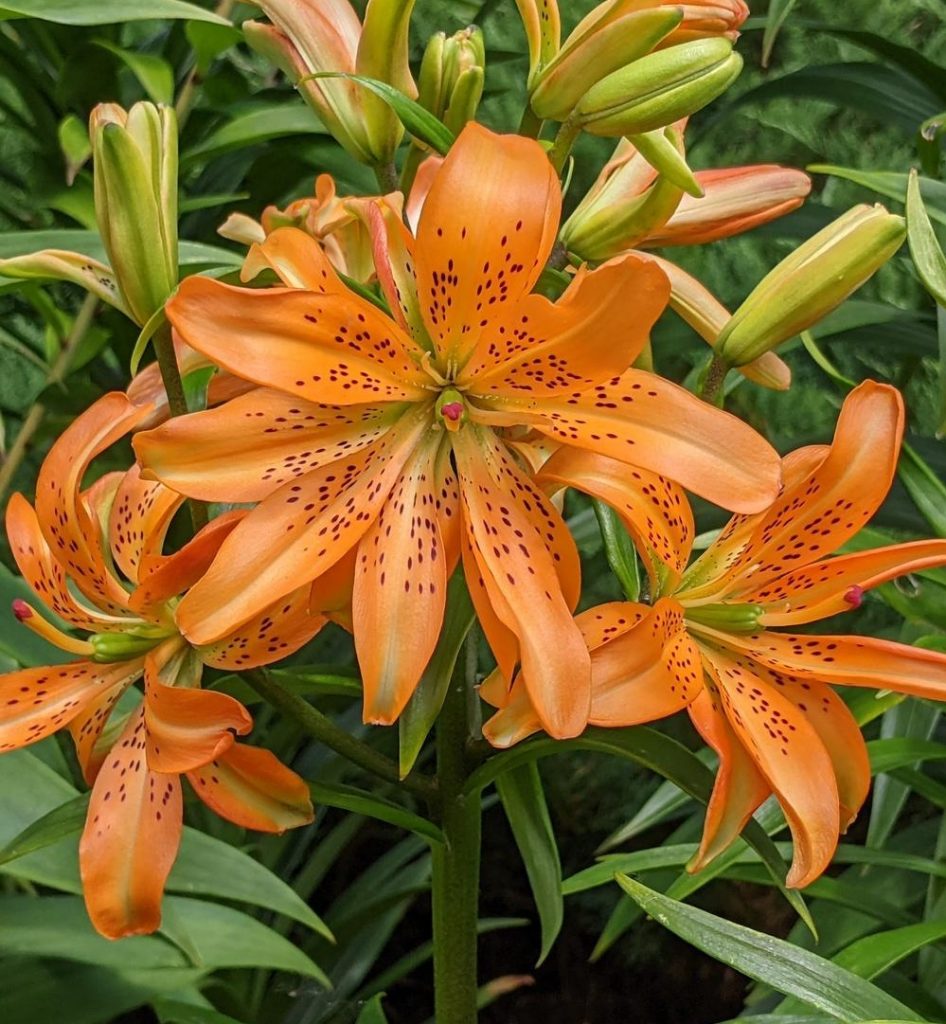
‘Regent’s Park’ (zones 3 through 8)
If you’re looking for a lily that’s orange, purely orange, look no further than ‘Regent’s Park’. While this flower doesn’t produce any pollen when it blooms in early to midsummer, it is incredibly fragrant, so it’s perfect for attracting butterflies, bees, and hummingbirds to your backyard or patio space. At its tallest, ‘Regent’s Park’ reaches 36 inches in height, so it makes a great edging for your flower beds. These lilies self-propagate, producing more blooms year after year, transforming your backyard into a lily lover’s paradise.
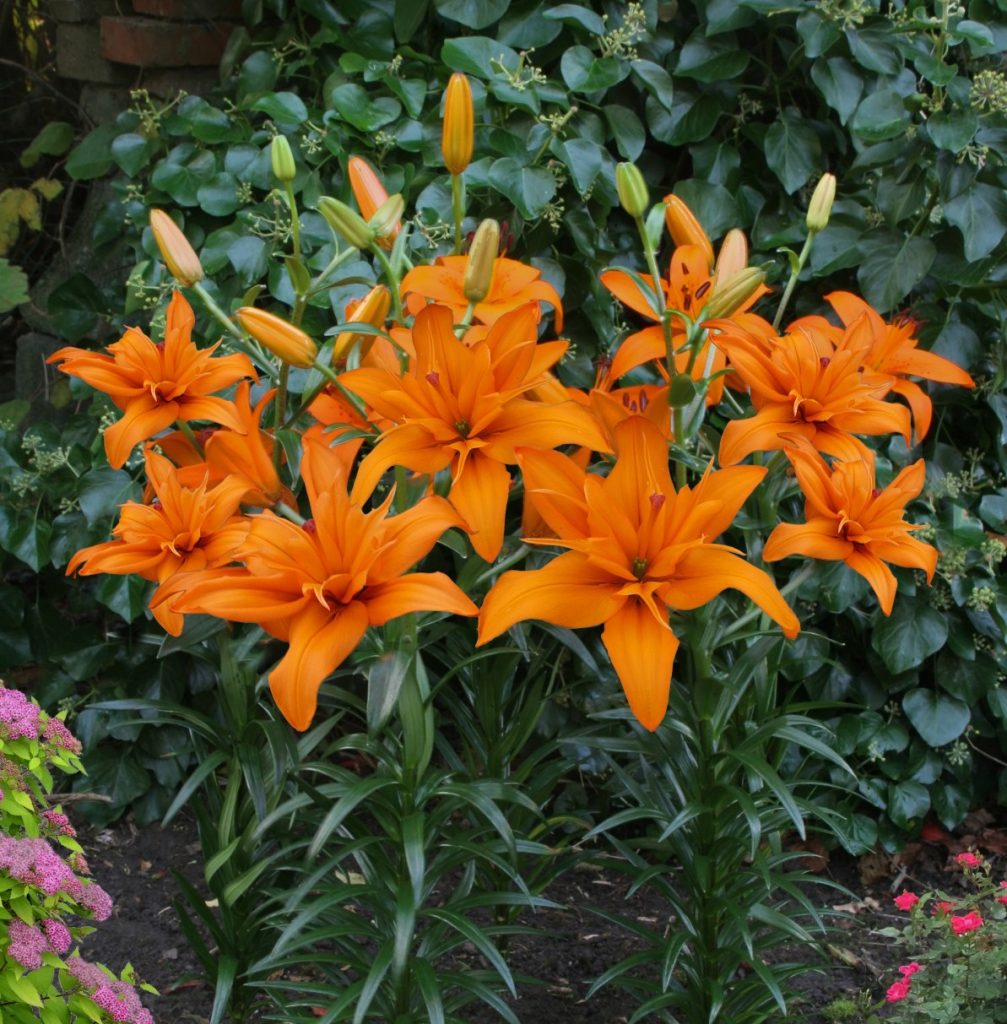
‘Tiny Double You’ (zones 3 through 8)
These ornamental lilies produce double blooms in an attractive peachy-orange color. This is a dwarf lily that only grows to be around 20 inches tall — roughly the size of your average daylily. ‘Tiny Double You’ lilies look great as a border or in decorative flower pots. But growing several ‘Tiny Double You’ lilies together in a bunch in your flower bed makes a beautiful showstopper. These flowers bloom in early to midsummer and pair well with irises, columbines, violets, peonies, and hibiscus.
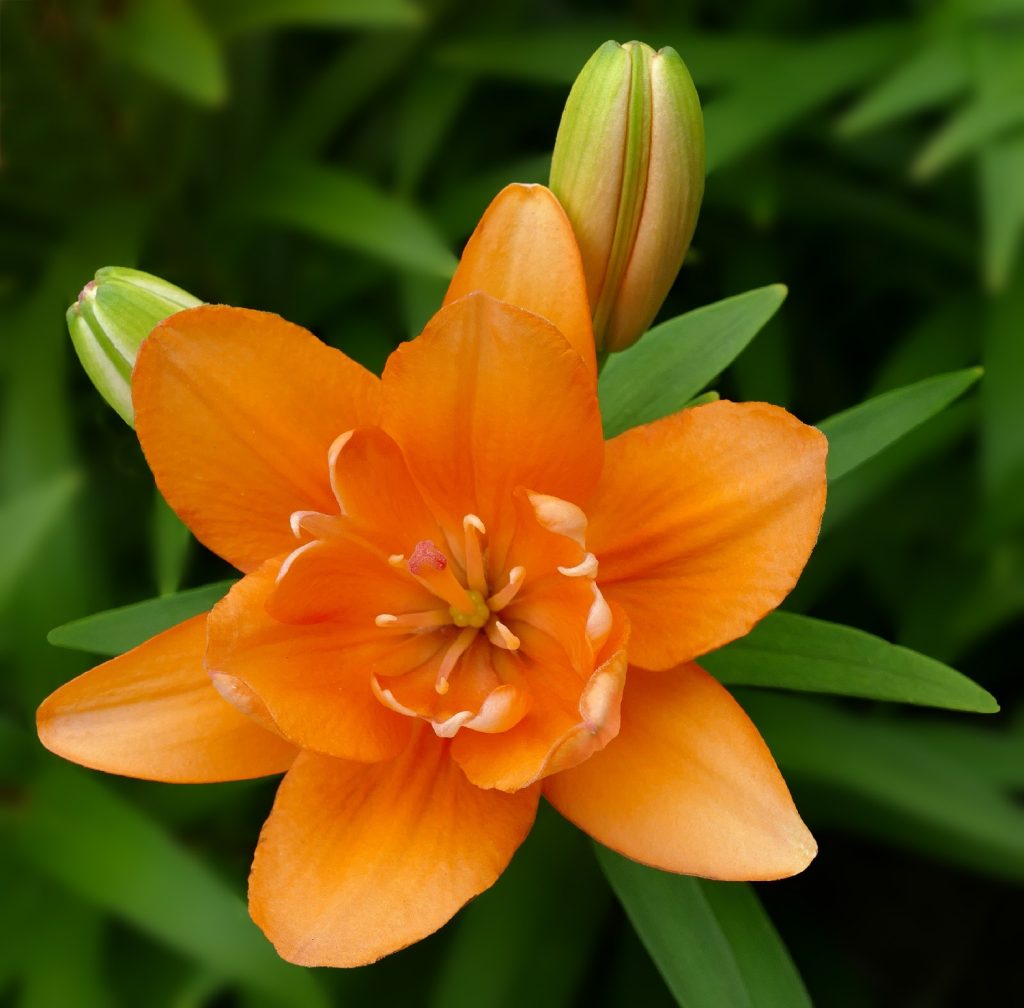
‘Sunny Morning’ (zones 3 through 7)
‘Sunny Morning’ lilies are bright yellow-orange with flecks of deep red accenting the petals. These lilies produce around 50 blooms per stalk. And the flowers themselves curve away from the stalks, making the trumpet-shaped blooms look like an exotic variety of honeysuckle. ‘Sunny Morning’ blooms in midsummer, when it attracts bees, butterflies, hummingbirds, and other pollinators to your backyard. Their unique shape makes these lilies perfect for growing in pots, but their ability to spread means they can take over a small flower bed in just a few seasons to create an amazing focal point.
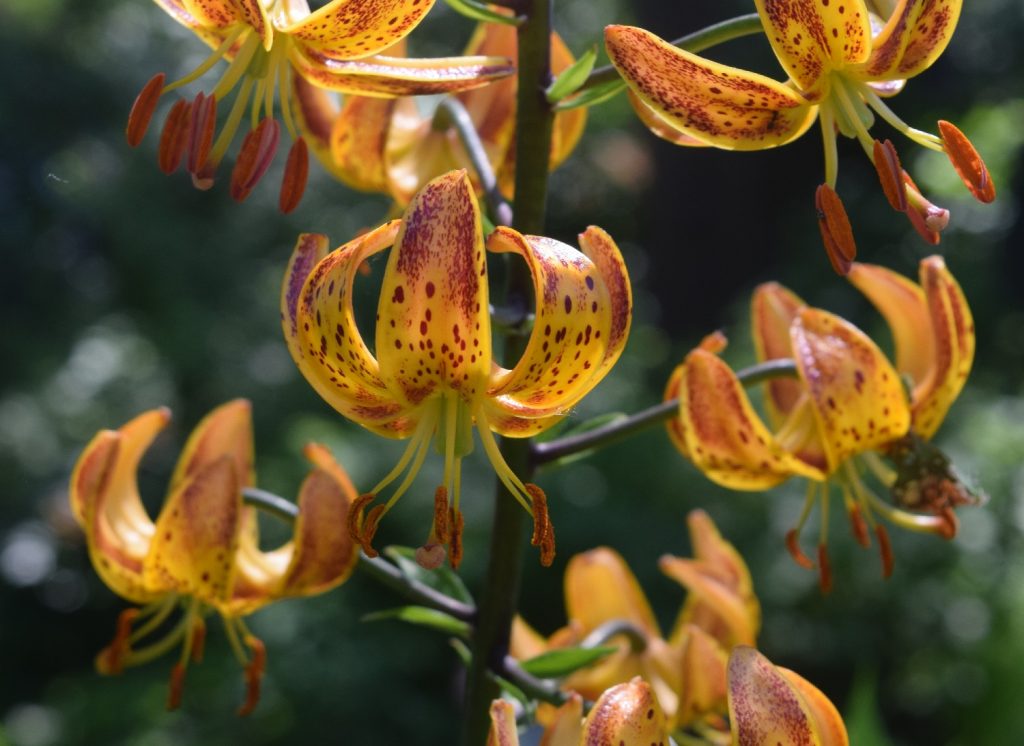
‘Tiger Lily’ (zones 3 through 9)
Unlike many lilies, ‘Tiger’ lilies are drought-tolerant, so they’re perfect for lily fans who live in drier climates. ‘Tiger’ lilies are bowl-shaped, with their petals folding open, then arching back towards the stems. Blooms range in color from a delicate pink, peachy orange to bright tangerine orange, and petals are dotted with deep reddish-brown spots. This plant’s dark green, almost black stems are just as interesting as the flowers. You’ll have a hard time tearing your eyes off these amazing lilies when they bloom in mid to late summer.
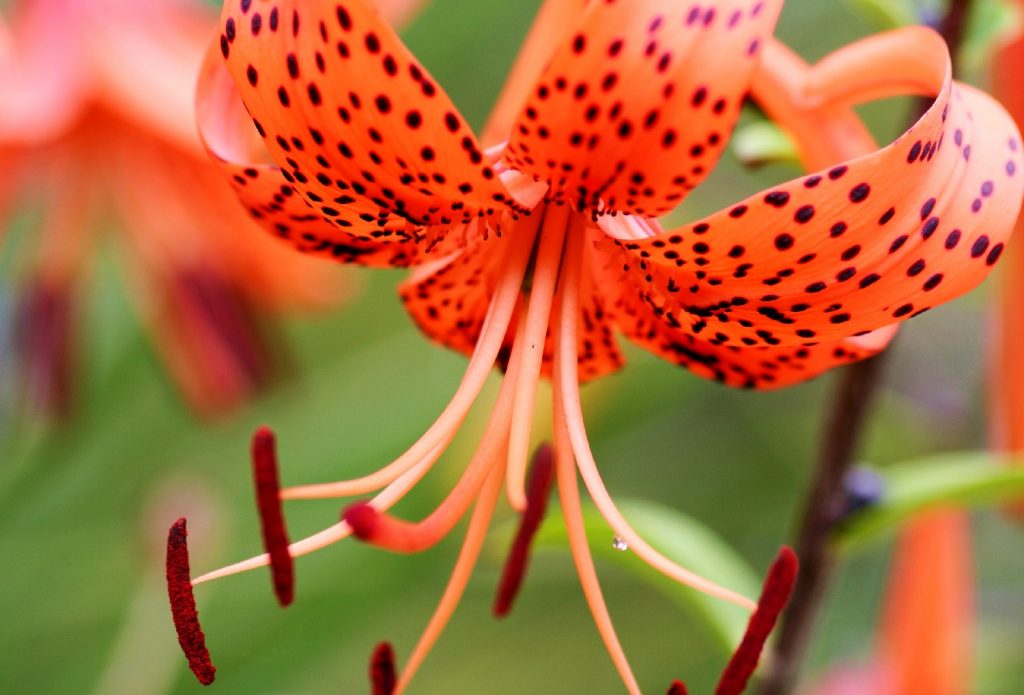
‘African Queen’ (zones 3 through 8)
Turn your backyard into a tropical paradise with the ‘African Queen’ lily. These large lilies can grow up to 6 feet tall and produce up to 20 blossoms per stem when they bloom in the mid to late summer months. These gorgeous lilies are almost completely solid orange, save for the brown pollen on the anthers at the center of the blooms. ‘African Queen’ lilies produce a strong, sweet-smelling fragrance that’s sure to draw the attention of local pollinators. These hardy flowers are perfect for cutting and look great in container gardens and tropical-themed landscaping.
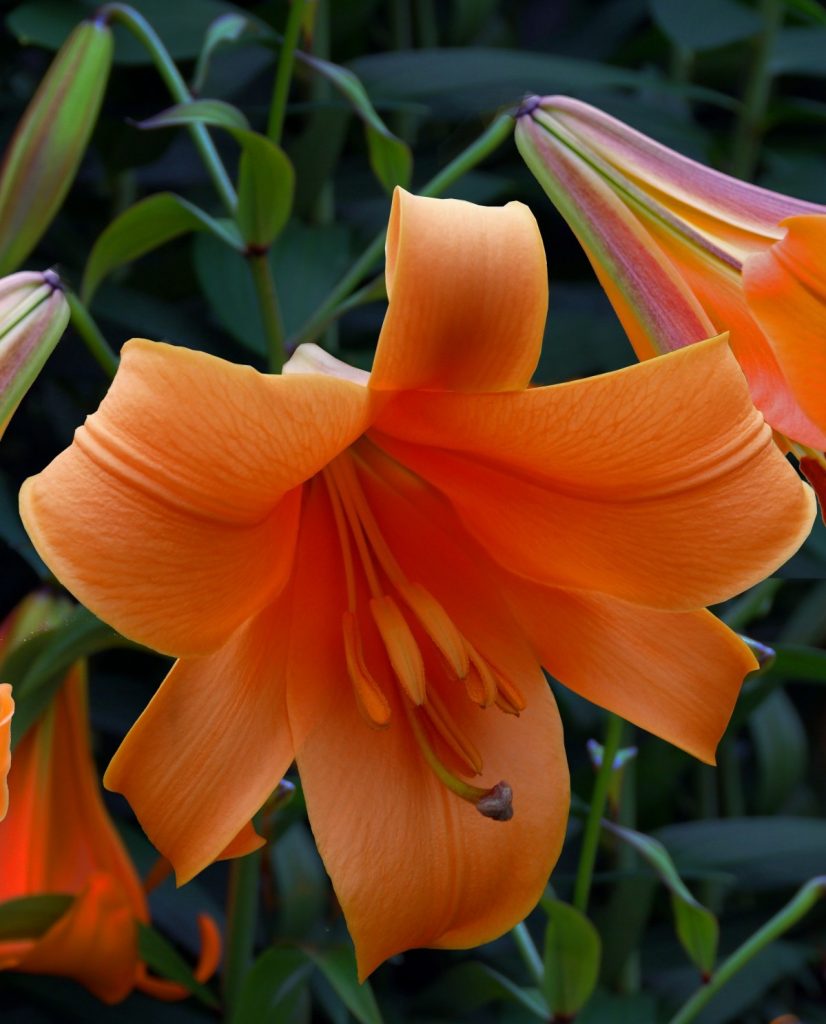
When should you plant your orange lilies?
Orange lily bulbs should be planted in early spring or fall. Use a hoe or spade to work 10 to 15 inches deep into the soil, breaking up clumps to make it nice and loose. Then, set each bulb stem side up, backfill around them, tamp the soil down to remove air pockets, and water them thoroughly.
Be sure to keep the soil around your lily bulbs moist, but not soggy. Lilies like damp soil with plenty of organic matter to keep it from becoming compacted. But what they don’t like is sitting in a puddle. That will cause the bulbs to rot before the lilies even get a chance to bloom.
What’s the best type of soil to grow orange lilies in?
Regardless of variety, lilies share similar soil requirements. Whichever types of orange lilies you choose to grow, be sure to plant them in moist but well-drained soil that has a pH of 6 to 7. Soil pH affects nutrient availability, and lilies prefer neutral to slightly acidic soils over alkaline ones. An at-home soil pH tester can help you determine where your soil falls on the pH scale.
If you plan on growing your lilies in containers, choose pots that have pre-drilled drainage holes. Be sure to line the bottom with gravel, pebbles, or a few large rocks to help water escape. Plant the lily bulbs in potting soil — any potting soil will do as long as it’s the right pH. However, some nurseries offer potting soil made specifically for lilies, so if you can find that, use it instead.
Where should you plant your orange lilies?
Where you plant your orange lilies depends on your region. While most lilies can tolerate full sun, too much heat will cause them to dry out and wilt. So if you live in a hot climate, grow your lilies where they get morning sun and afternoon shade.
If the temperatures tend to stay cool in your region, you can plant your orange lilies in full sun. They’ll appreciate the warmth, and because the air stays cooler, they’ll be less likely to suffer from an inordinate amount of moisture loss.
If you choose to grow tall orange lily varieties, grow them against a structure, that way you can tie them up if you need to. Because lilies produce flowers at the tips of their stalks, they can sometimes get top-heavy. So they may need some help staying upright.
Do orange lilies attract wildlife?
As we touched on earlier, many varieties of orange lilies can attract pollinators to your backyard. Unfortunately, because these lilies have been hybridized, they lack the pollen and nectar that bees, butterflies, hummingbirds, and wasps crave. While you can still incorporate these flowers into your garden, be sure to plant nectar-rich and pollen-rich flowers, too, like peppermint, wisteria, and azaleas.
Your lily plants may be a hit with other wildlife, too. Deer like to nibble on the lily plant’s tender foliage. Harmful insects, including the lily beetle, may feed on and lay eggs in your lily plants, too. Be sure to spray your orange lilies with a homemade deer repellent and/or insect repellent to keep these pesky critters away from your landscaping.
Are orange lilies easy to care for?
Beautiful as they are, you might think lilies are especially difficult to grow, but that’s not true. Lilies are pretty low-maintenance for an ornamental plant. While they can certainly benefit from being fertilized monthly, all they really need to grow well is a decent mix of shade and sunlight, regular waterings, and well-drained soil.
By allowing your orange lilies to start out on the right foot, you’ll be giving them everything they need to grow well. These fast-growing blooms tend to spread on their own, getting bigger each season. Their ability to self-propagate with very little outside influence makes all types of orange lilies incredibly easy to care for.

What are the black pods/beans growing on the stalk? Are they seeds? I thought lilies grew from bulbs. Thanks